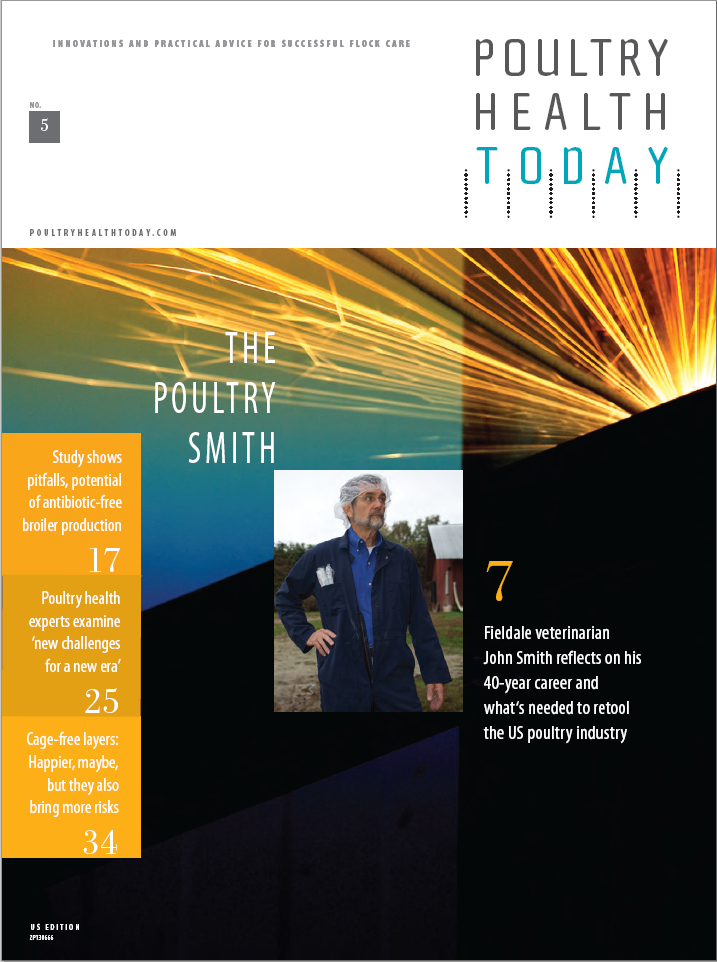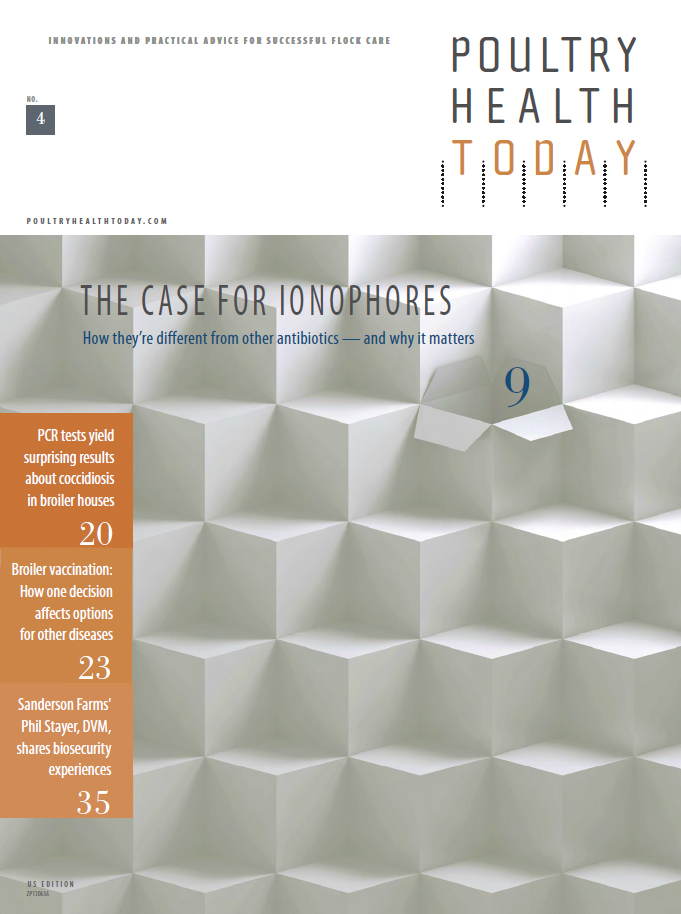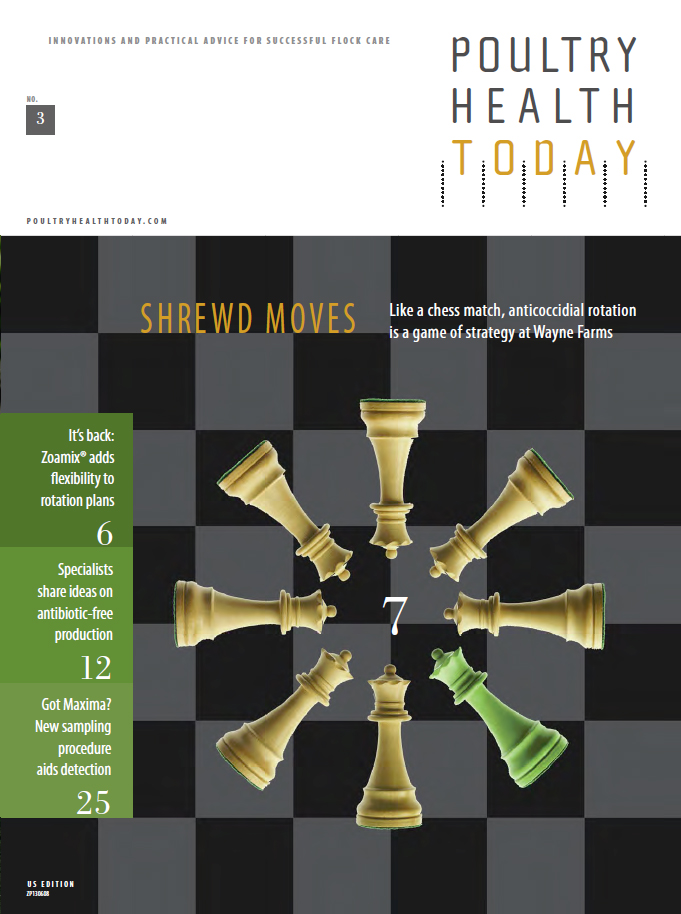

Broiler vaccines: More diseases, more decisions

There’s more to broiler vaccination than Marek’s, infectious bursal disease, infectious laryngotracheitis and Newcastle disease. According to Kalen Cookson, DVM, MAM, and Lloyd Keck, DVM, ACPV, of Zoetis Inc., vaccines also play major roles in curbing these common diseases:
INFECTIOUS BRONCHITIS VIRUS
Cold, weather sets the stage for infectious bronchitis (IB) outbreaks in broiler flocks. The key to successful control is correctly identifying the circulating virus or viruses. Because the IB virus is constantly mutating, finding the best control measure is like hitting a moving target.
One of the most damaging IB variants is Georgia 08 (GA 08), first identified in the winter of 2007-08. Today, a homologous vaccine helps offer protection from GA 08, but this isn’t the only IB strain causing problems for producers.
In many cases, a heterologous vaccine program utilizing vaccines with different serotypes offers cross-protection in the field. Keck recommends obtaining PCR analysis to determine the most prevalent IB serotypes in a flock.
The Massachusetts IB vaccine is an original field isolate that can help provide a baseline of protection. After testing for active serotypes in a flock, broiler companies can use it with one or more of Arkansas, Connecticut, GA 98 or GA 08 vaccines to help extend protection.
Cookson says, when facing a high field challenge, growers need the best antigenic match possible. This may mean using one, two or a maximum of three serotypes to get the best coverage without overwhelming the bird’s immune system. The level of protection achieved against IB depends on farm density, the season, the degree of immune suppression and a farm’s ability to field-boost.
E. COLI
E. coli has become more prevalent in broiler operations that have discontinued antibiotics in the hatchery. In addition, cool, wet weather increases the incidence of secondary E. coli infections due to respiratory challenges from IBV, ILT and ND. E. coli can also occur as a primary disease.
As a day-of-age spray, E. coli vaccination is gaining acceptance for its ability to help decrease mortality, particularly in large birds, Keck says.
COCCIDIOSIS
Coccidiosis vaccines are often used in poultry raised without antibiotics, as well as in conventional production systems that need to rest in-feed anticoccidials and restore their efficacy. The vaccines tend to be used in summer months, when coccidiosis pressure subsides with increased ventilation. Producers then switch back to ionophores or synthetic anticoccidials.
In the US, broiler operations have the option of administering coccidiosis vaccine in ovo or on day 1 as a hatchery spray. According to Cookson, the choice hinges on company philosophy, production history and management preferences.
“The challenge with coccidiosis vaccine is getting good, uniform delivery of the vaccinal oocysts that stimulate the bird’s natural immune system,” Keck says. “Zoetis research with alternative delivery systems has shown great potential for helping improve vaccine and flock performance.”
He points out that the first round of coccidial vaccination is a transition period for most growers as birds often face both a field and vaccination challenge.
“Because vaccines may initially cause short-term intestinal disruption and loss in performance, they are usually more practical and cost-effective to use in medium to large birds that have more time to make up for lost weight,” he says.
For more information on developing a long-term vaccination strategy, readers should contact Kalen Cookson or Lloyd Keck.
More Issues












